Selection of Windows and Doors
- GOAL:
- The student will realize that different types and styles of windows and doors have different R-values -- ability to resist heat penetration.
- OBJECTIVES:
- The student will be able to:
- 1. Discuss the types of windows and the importance of a high R-value.
- 2. List the different styles of windows and state which styles are more energy efficient.
- 3. Select doors in regard to energy savings.
- LESSON / INFORMATION:
- Windows
- All windows are either single, double, or triple paned in design. For any new construction or window replacement project, double paned windows are usually recommended.
- The popular double paned window consists of two panes of glass with air trapped between them. The optimum dimension of this airspace is about 3/4". This trapped air is an insulator. It increases the window's ability to resist penetration by heat.
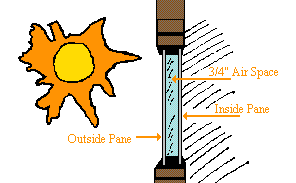
- This resistance to heat penetration is also referred to as the window's R-value. Any action taken to increase a material's R-value will decrease energy use and increase energy savings.
- Another option to selecting energy efficient windows is to choose a type of glass or glass treatments that can have a great effect on energy savings.
- Proper installation is also significant in energy conservation. Applying caulking to the window frame prior to placing the window in the designated area will reduce air infiltration. Similarly, a bead of caulking, or liquid styrofoam applied after the window is fastened will help insure a perfect seal.
- The style of window chosen will also affect the energy conservation capacity of the home.Of the common types, the casement window seems to be the most energy efficient, followed by the awning and sliding windows. Double hung windows follow with a higher leakage rate, and the least efficient window is the jalousie.
- ACTIVITY 1:
- Try to identify the types of windows sketched below page. Number them from most to least energy efficient.
- a.______ ___________________
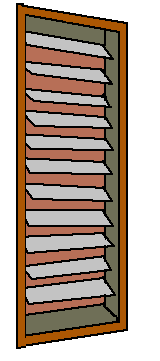
- b.______ ___________________
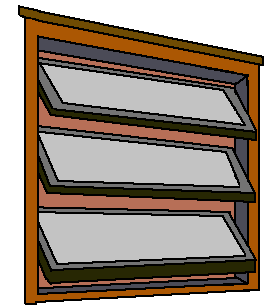
- c.______ ___________________
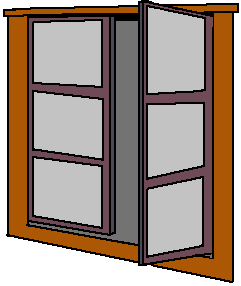
- d.______ ___________________
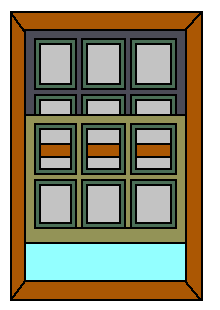
- e.______ ___________________
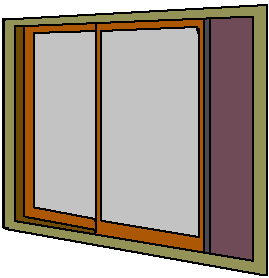
- For persons living in existing homes or apartments with windows that are not very energy efficient, here are some ways to try to decrease energy waste:
- 1. Plant trees or shrubs to protect windows from sun and wind.
- 2. Add overhangs or awnings to the window's exterior.
- 3. Use solar screens. These resemble ordinary windowscreens, but they block up to 90% of solar heat gain and are relatively inexpensive.
- 4. Stop air infiltration by caulking around window frames and openings.
- 5. Use interior window shades or blinds.
- Doors
- Selecting exterior doors is relatively easy as there are usually just two types to choose from -- solid wood doors and insulated metal doors.
- ACTIVITY 2:
- Which type of door do you think is a better energy saver? Why?
- ________________________________________
- ________________________________________
- ________________________________________
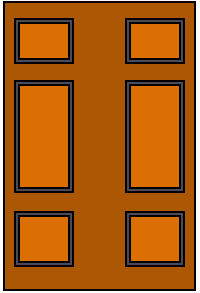
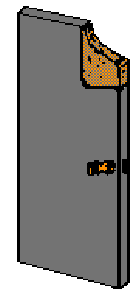
- The answer can be found by examining the R-values of these two door types. Wood doors usually have an R-value of about 2.5 while insulated metal doors have R-values ranging from 6 to 10. Therefore the metal door is better as it is more effective at resisting penetration by heat.
- The metal doors have another advantage in that they are delivered by the retailer with a complete seal -- top, sides, and bottom.
- The proper installation of doors also is important in preventing air infiltration. The door frame needs to be caulked before and after installation.
- ACTIVITY 3:
- List the types and number of doors and windows you have at home. Is each type a good energy saver? If not, tell what you can do to decrease heating and cooling energy loss.
- 1. _________________________________________________________
- 2. _________________________________________________________
- 3. _________________________________________________________
- 4. _________________________________________________________
- RECOMMENDED READING:
- A Builder's Guide to Energy Efficient Homes. SLEMCO,Lafayette, LA, n.d.
- Manual for Building Energy Efficient Homes in Louisiana. Louisiana Department of Natural Resources, Baton Rouge,LA, 1983.
- INFORMATION CHECK
- Place the letter of the correct answer in the blank.
- _____1. Most new construction recommends __?___ paned windows.
- a. single
- b. plain
- c. storm
- d. double
- _____2. The actual insulator in windows with two panes is
- a. metal
- b. air
- c. gas
- d. fiberglass
- _____3. The preferred airspace in this type window is
- a. 1/4"
- b. 3/4"
- c. 1"
- d. 2"
- _____4. Resistance to heat penetration is referred to as
- a. R-block
- b. R-heat
- c. R-value
- d. R-stop
- _____5. The most energy efficient style of window is
- a. casement
- b. awning
- c. double hung
- d. jalousie
- _____6. The window that allows the most air leakage is
- a. casement
- b. awning
- c. double hung
- d. jalousie
- _____7. This blocks up to 90% of solar heat gain.
- a. interior shades
- b. solarscreens
- c. awnings
- d. trees
- _____8. Energy is lost by __?___ around frames and openings.
- a. caulking
- b. water
- c. ventilation
- d. infiltration
- _____9. The most energy efficient exterior door type is
- a. solid wood
- b. solid metal
- c. insulated wood
- d. insulated metal
- _____10. Which value shows the most resistance to heat penetration?
- a. R-1
- b. R-10
- c. R-2.5
- d. R-6
- TEACHER'S NOTES
- Activity 1:
- The window types are as follows:
- a.= Jalousie
- b.= Awning
- c.= Casement
- d.= Double hung
- e.= Sliding
- Numbered from most to least energy efficient are:
- a.= 5
- b.= 2
- c.= 1
- d.= 4
- e.= 3
- Activity 2:
- Look at student's opinion on which door is the best energy saver. Be sure that they try to support their opinion.
- The answer is the insulated metal door and the reasons are explained in the text.
- Activity 3:
- Student should list all types of windows and doors in his home and their number and location. Based on information in this packet, the student should try to identify the window or door in regards to energy efficiency. Suggestions to help increase efficiency might include some of the following:
- - Plant trees or shrubs to protect windows from sun and wind.
- - Add overhangs or awnings to the window's exterior.
- - Use solarscreens. These resemble ordinary window screens, but they block up to 90% of solar heat gain and are relatively inexpensive.
- - Stop air infiltration around window and door frames and openings.
- - Use interior window shades or blinds.
- Definitions:
- 1. Air space -
- This is found between the panes of double or triple paned windows and acts as an insulator to reduce heat losses and gains.
- 2. R-value -
- This refers to a material's resistance to penetration by heat; the higher the number the better. Unprotected 1/8" glass, common window glass, has an R-value of 1.
- Answers to Information Check:
- 1. d
- 2. b
- 3. b
- 4. c
- 5. a
- 6. d
- 7. b
- 8. d
- 9. d
- 10. b
Comments or questions to: TechAsmt@LA.GOV
Return to Construction and Design Menu








